Table of Contents
Air Conditioner in Car is Not Blowing Cold – Case Study: Mercedes-Benz GL500 X166
When the air conditioner in your car is not blowing cold, driving in hot weather quickly becomes frustrating. Modern Mercedes-Benz models, like the GL500 X166, are equipped with advanced Automatic Air Conditioning (AAC) systems designed to deliver comfort. However, when these systems fail, the cause is not always straightforward.
This article explores a real-world case study of a Mercedes-Benz GL500 X166 where the air conditioning system stopped cooling effectively. We’ll walk through the diagnostic process, findings, root cause, and solution, then provide takeaways and preventative tips that apply to any driver facing similar AC issues.

Customer Complaint
The owner of a Mercedes-Benz GL500 X166 reported:
- – The air conditioning system was not cooling properly even though the blower and AC functions were operational.
This prompted a thorough diagnostic procedure.

Diagnostic Process
1. Short Test
- – Action: Connected diagnostic scanner to the AAC (Automatic Air Conditioning) control unit.
- – Finding: No fault codes detected. Electronics and control modules appeared functional.
2. Checked Actual Values
- – Action: Monitored sensor inputs in real time.
- – Finding: The outside temperature sensor showed incorrect readings, which suggested a sensor malfunction.
3. Resistance Value Inspection
- – Action: Measured resistance of the outside temperature sensor with a multimeter.
- – Finding: No specific resistance value detected. This confirmed the sensor was defective.
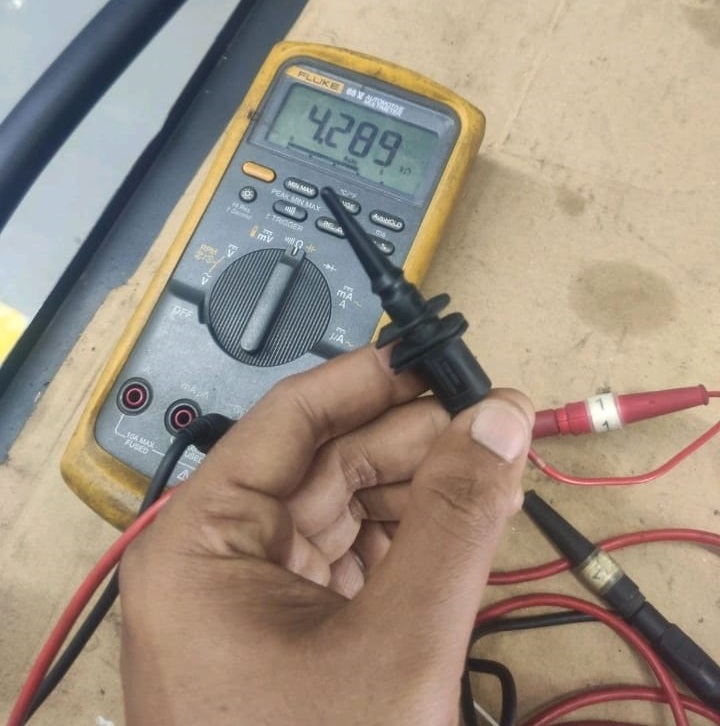
4. Refrigerant Gas Level Check
- – Action: Measured refrigerant levels after carefully releasing and weighing the gas.
- – Finding: System contained refrigerant but not at the optimal level. No major leaks were detected.

Remedy and Repair Steps
1. Recharged Refrigerant Gas
- – Brought refrigerant charge back to Mercedes-Benz specifications.
- – Ensured optimal cooling pressure levels.
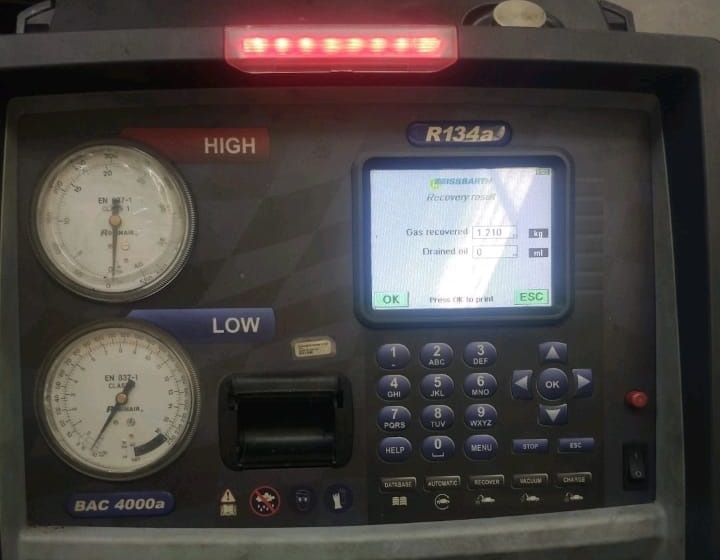
2. Replaced Outside Temperature Sensor
- – Installed a genuine Mercedes-Benz sensor for accurate data and reliability.
- – Restored proper communication with the AAC control unit.

Post-Repair Validation
After repairs were completed:
- – The air conditioning system produced cold air as expected.
- – The outside temperature sensor displayed accurate readings on both the AAC system and dashboard.
- – Road testing confirmed the issue was resolved, leaving the customer satisfied.
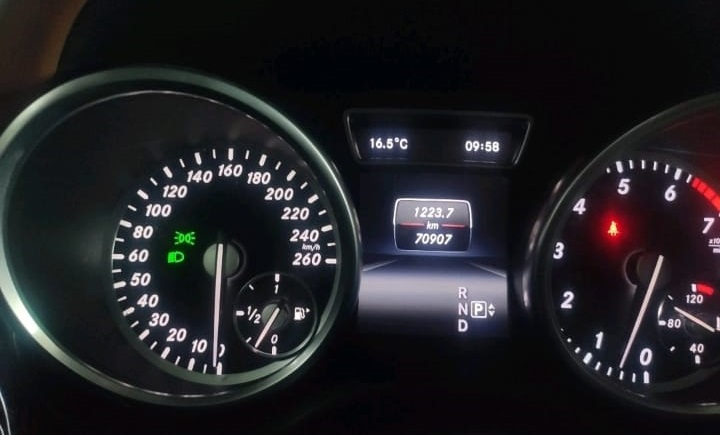
Quick Reference Table – Diagnostic Process
| Step | Action | Finding |
|---|---|---|
| Short Test | Scanned AAC control unit | No fault codes detected |
| Actual Values Check | Monitored sensor readings | Incorrect outside temperature reading |
| Resistance Test | Measured sensor with multimeter | No measurable resistance |
| Refrigerant Check | Released & weighed refrigerant | Gas present but not optimal |
Explore More Mercedes AC and Climate Control Issues
For a deeper dive into all AC-related issues, visit our hub page: Mercedes AC and Climate Control Problems – Complete Troubleshooting Guide. You’ll find grouped case studies, step-by-step diagnostics, and prevention tips.
Key Takeaways for Drivers
If your air conditioner in car is not blowing cold, follow these practical steps:
- – Scan for fault codes: Even if none appear, continue with sensor checks.
- – Verify outside temperature sensor: Incorrect data can cause major AC malfunctions.
- – Check refrigerant level: Both low and excessive gas levels reduce cooling performance.
- – Use genuine parts: Non-OEM sensors may fail prematurely.
Preventative Tips for Mercedes AC Systems
| Maintenance Task | Recommended Interval | Benefit |
|---|---|---|
| Cabin air filter replacement | Every 12 months / 15,000 km | Prevents odors & improves airflow |
| AC system service (gas & leak check) | Every 2 years | Keeps refrigerant pressure optimal |
| Sensor inspection | During scheduled service | Ensures accurate climate control data |
| Run AC regularly | Weekly, even in winter | Keeps seals lubricated and prevents leaks |
Outside Temperature Sensor: Role and Failures
The outside temperature sensor plays a key role in Mercedes climate control:
- – Temperature Display: Provides ambient temperature on the dashboard.
- – AC Performance: Sends data to AAC for cooling/heating adjustments.
- – Engine Efficiency: Some ECUs use the data for emissions control.
- – Safety Alerts: Warns drivers about icy road risks.
How It Works
- – Built as a thermistor, resistance changes with temperature.
- – The control module converts resistance into a temperature value.
Common Locations
- – Behind the front bumper (near grille).
- – In side mirror housing.
- – Underside of the vehicle.
Symptoms of Failure
- – Incorrect or fluctuating temperature display.
- – AC blowing warm air despite system running.
- – Fault codes logged in AAC or ECU.
- – No outside temperature display at all.
Causes of Failure
- – Physical damage from debris or impact.
- – Moisture and corrosion.
- – Wiring damage.
- – Natural aging and wear.
FAQs – Air Conditioner in Car Not Blowing Cold
Q1. Why is my Mercedes AC running but not blowing cold air?
This is often caused by low refrigerant, a faulty sensor (like the outside temperature sensor), or a failing compressor.
Q2. Can a faulty temperature sensor stop my AC from cooling?
Yes. If the sensor sends incorrect data, the AAC system won’t adjust properly, resulting in warm air.
Q3. How do I check if my Mercedes AC sensor is bad?
Use a diagnostic tool to compare the sensor reading with the actual outside temperature. If it’s inaccurate, test resistance with a multimeter.
Q4. How much does it cost to replace a Mercedes outside temperature sensor?
On average, between $100–$250 depending on model and labor costs.
Q5. How often should I recharge my AC gas?
Typically every 2 years, unless a leak or component failure occurs.
Conclusion
This Mercedes-Benz GL500 X166 case study highlights how even a small component like the outside temperature sensor can lead to big problems when the air conditioner in car is not blowing cold. By following structured diagnostics scanning, checking sensor values, verifying refrigerant levels the issue was quickly identified and resolved.
Drivers can apply the same logic to troubleshoot their own vehicles, and with proper preventive maintenance, avoid costly AC failures in the future.
Author
Written by: Mercedes Expert
Automotive Technical Trainer & Mercedes-Benz Diagnostic Specialist
With years of hands-on experience repairing and diagnosing Mercedes-Benz vehicles, specializes in case-study-based troubleshooting guides that blend workshop accuracy with educational clarity.
Last Updated: August 2025

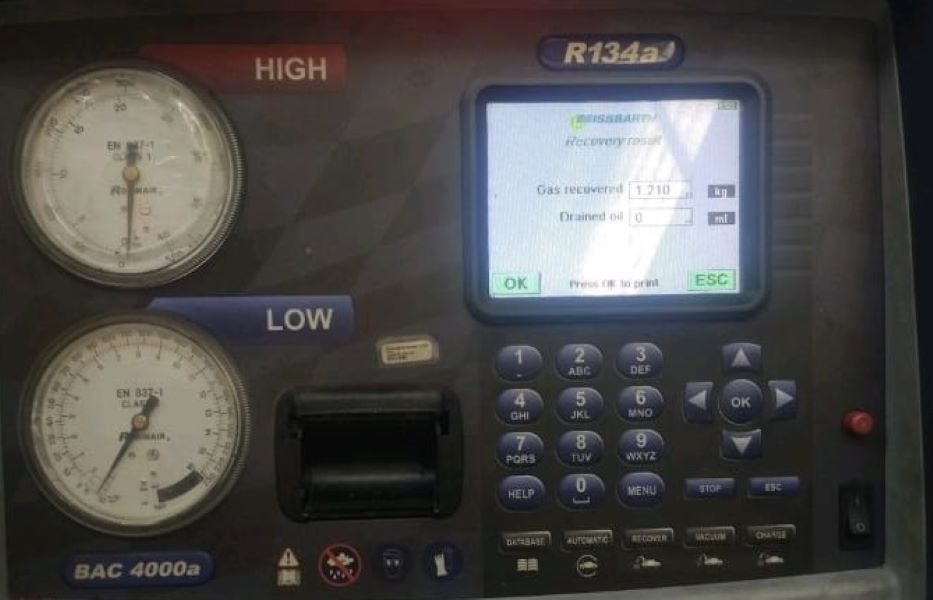
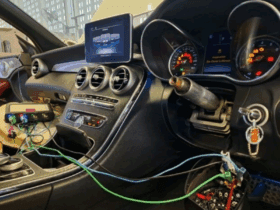

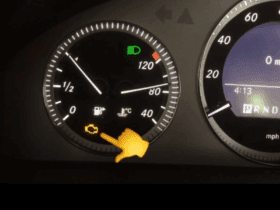
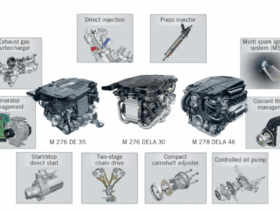
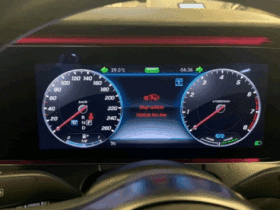
Leave a Reply